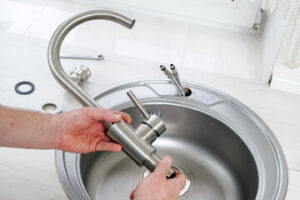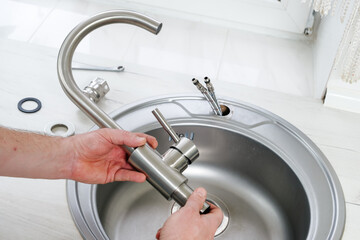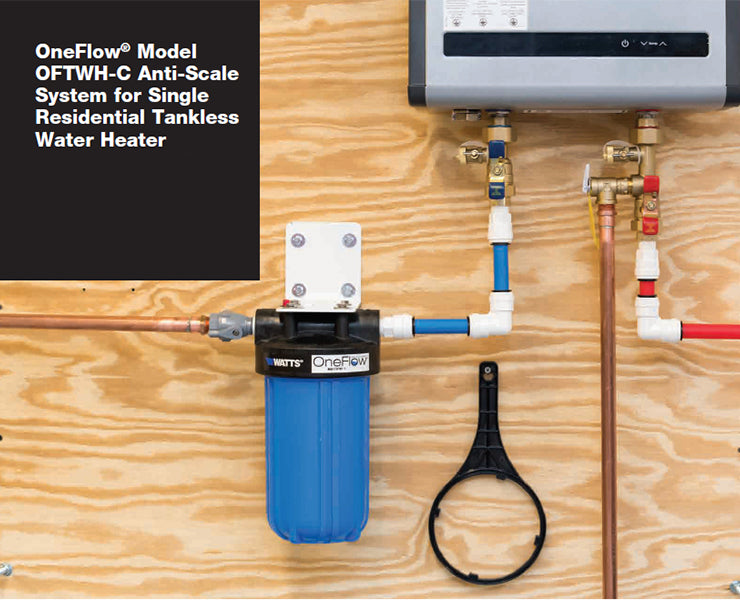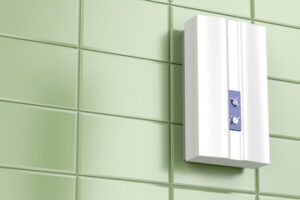If you have new or special vintage faucets that are important to you, repairing them may make more sense than replacing them. However, a plumber can give you peace of mind if you’re uncertain about your abilities.

Before you begin, shut off the water supply at your home improvement store or main water line. Then, remove the handle by loosening the decorative cover and unscrewing the handle screw with an Allen wrench or a screwdriver. Visit Website to learn more.
The drip-drip-drip of a leaky faucet can become downright annoying, not to mention expensive. If left unattended, even a small leak can send up to three gallons of water down the drain a day and add up to a staggering amount over a year. And that’s just a single faucet!
Fortunately, repairing or replacing the components responsible for a leaky faucet is fairly straightforward. The first step is to turn off the water supply. Find the valves in your home’s plumbing system, usually under the sink in a cabinet, and shut them off by turning them clockwise. This should stop new water from entering the line, but you’ll still want to open both the hot and cold valves to drain any existing water.
Once the water is off, you can begin removing and disassembling your faucet to diagnose the problem. Before you do, however, make sure the faucet is completely dry by opening both the handle and the spout to drain the water and prevent it from returning once you’ve finished working on the sink.
Many leaks originate from a worn or damaged O-ring. This is a small circular disc that fits around the stem screw and seals it against the body of the faucet. Leaks at the base of the spout are often caused by a corroded valve seat. This is a connector between the valve and the spout that can deteriorate due to friction and mineral deposits.
Another common cause of a leaky faucet is a loose screw. It’s important to check all the screws in your faucet regularly to make sure they are tight. A loose screw can lead to a leak, so be sure to tighten all the nuts and bolts in your faucet when you’re done working on it.
Other causes of a leaky faucet include a cracked or broken washer or neoprene seal. Replacing these can fix the problem, but sometimes they’re more complicated to replace, so you might need a plumber for help. If you suspect this is the case, it’s best to call a professional and have them check out your entire plumbing system.
Cracked or Broken Components
A broken faucet can cause puddles of water under your sink that can stain or damage cabinets and walls. It can also lead to mold, which is not only unsightly but unhealthy to have in your home. In addition, those leaking drops can add up over time and result in high water bills.
Fortunately, you can usually fix most issues with a leaky faucet with a simple repair or replacement. If you’re not comfortable performing this type of home improvement, call a licensed plumber to assess the issue and make the necessary repairs or replacements.
Leaks from a faucet handle often occur when the stem or cartridge has worn out or is broken. This can be caused by mineral deposits or simply by years of use. In many cases, replacing these parts is the only way to fix a broken or leaky faucet handle.
The first step to take is to shut off the water supply by turning the valve handles counterclockwise. After this, you can proceed to remove the faucet handle and reassemble it. It’s a good idea to have all the tools you’ll need for the project before starting so you don’t encounter any surprises or run out of supplies in the middle of the process.
Depending on the type of faucet, you may have to remove the escutcheon cap and screw off the handle with a screwdriver. If the screw is corroded, you can soak it in a mixture of hot water and white vinegar to loosen it. Once the handle is removed, you can unscrew the disk cylinder mounting screws and lift out the cartridge with a screwdriver. If you have a ceramic disc valve, you may need to remove the plastic disc on top of the cartridge and replace the rubber “O” rings beneath it.
Once the new components are in place, you can reassemble the faucet and turn on the water to test it out. If you have no leaks and the handle operates smoothly, congratulations! You’ve successfully repaired your faucet handle. But if you notice that there are still leaks or other problems, it’s time to call in a professional plumber.
Damaged Seals
The valve seat and other functional parts of the faucet can corrode and wear out over time. If this happens, the spout may begin to leak around the actual handles instead of from the valve itself. The O-ring and seat washer are responsible for preventing this, but you can also use a valve seat-grinding tool to reshape the damaged seat.
Before you begin any disassembly, turn off the water. This is important for safety and to avoid any uncontrolled spraying of water that could damage your pipes or cause mold growth. It’s also wise to cover the drain with a towel or old t-shirt. This will help prevent any old or new faucet parts from accidentally falling down the drain.
Begin by removing the handle screw, packing nut, and stem. Inspect each of these components for wear and corrosion, which are common causes of dripping faucets. If any are worn out, you can replace them with replacements found at hardware stores. It’s a good idea to keep track of the screw size as you remove it and write down or photograph its location in case you need to replace it later.
If your faucet is a cartridge or ball type, you’ll need to remove the cartridge in order to inspect and clean the inlet seal and the valve seat. You can purchase these parts from most hardware or home improvement stores, but you’ll need to know the specific type and brand of your faucet to find the right replacements. If the inlet seal or valve seat are damaged, you can usually find a repair kit to fix them.
If you’re repairing a disc-seat or ceramic-disk faucet, you’ll need to remove the decorative cap and screw that hold the disk cartridge in place. Then you can lift out the cylinder and unscrew the mounting screws to pull it off. Once you’ve removed the cartridge, you can replace the O-ring and clean out the neoprene seals in the cylinder with distilled white vinegar. After cleaning the neoprene seals, you can replace them and then insert the disk cartridge into its place.
Choosing a Replacement
The lifespan of a faucet depends on its make and model, but most last 15 years or more. If yours is starting to age, it’s probably time to replace it. Even if it’s still in good working condition, a leaky faucet can cause water damage to other parts of your home and increase your utility bills.
Leaking faucets can also lead to mold growth, which is unhealthy for you and your family. If you notice black spots or mold in the sink or around your faucet, call a plumber right away. They can help you choose a new faucet that will reduce or eliminate leaks and prevent further damage to your home.
Replacing a faucet can seem like a daunting task, but it’s actually much easier than you might think. If you’re comfortable opening up the cabinet under your sink, you can usually install a new faucet in about an hour. However, if you’re not comfortable or have limited time, it may be best to hire a professional plumber to complete the job for you.
Another sign that your faucet is ready to be replaced is if you’re constantly having to repair it. While a few repairs here and there are typically cheaper than a full replacement, it’s worth considering a new faucet if the repairs add up to more than half of the original cost of the fixture.
Other signs that it’s time to replace your faucet include poor water pressure or mineral deposits. Low water pressure is likely caused by a significant amount of corrosion or hard water buildup, which is difficult to remove and won’t be solved by simple fixes. On the other hand, mineral deposits can easily cause your faucet to clog.
If your faucet is showing any of these signs, it’s time to consider replacing it with a new one. Not only will a new faucet look better in your kitchen or bathroom, but it will also save you money on energy and water bills by being more efficient. Additionally, newer faucets can offer a variety of features that make it easy to operate and keep your home clean and healthy.


